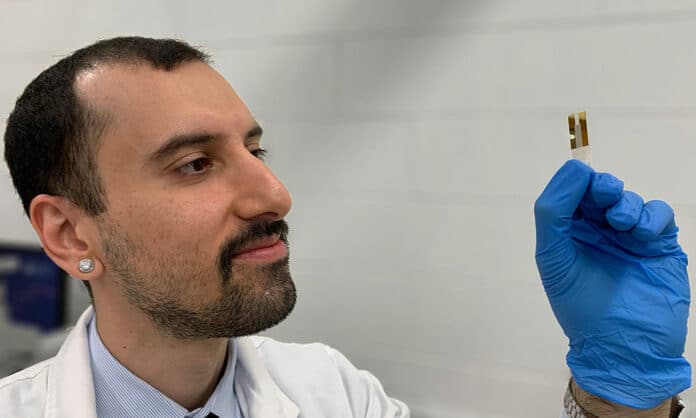The high cost of recycling lithium and other materials from batteries is a major barrier to these items being reused, but the new innovation from a team at Australia’s RMIT University could help to address this challenge.
Thanks to innovation, mobile phone batteries with a lifetime of up to three times longer than today’s technology could also be a reality.
The team is working with a nanomaterial called MXene, a class of materials that has been touted as a faster-charging alternative to lithium for batteries in the future. MXenes holds immense potential, given their superior electrical properties. The practical adoption of these promising materials is, however, severely constrained by their oxidative susceptibility, leading to significant performance deterioration and lifespan limitations.
Leslie Yeo, Distinguished Professor of Chemical Engineering and lead senior researcher, said MXene is similar to graphene with high electrical conductivity. “Unlike graphene, MXenes are highly tailorable and open up a whole range of possible technological applications in the future,” said Yeo from RMIT’s School of Engineering.
Currently, the greatest challenge with using MXene is the fact that it rusts quite easily in humid environments, thereby inhibiting electrical conductivity and rendering it unusable, he said. MXene membranes are considerably thinner than human hair, and therefore removing the surface oxide, which is rust, has proven to be quite difficult. Current methods used to reduce oxidation rely on the chemical coating of the material, which limits the use of the MXene in its native form.
To overcome this challenge, the RMIT research team has discovered that sound waves at a certain frequency remove rust from MXene, restoring it to close to its original state.
More specifically, researchers have shown in their work that exposing an oxidized MXene film to high-frequency vibrations for just a minute removes the rust on the film. This simple procedure allows its electrical and electrochemical performance to be recovered, they said. The innovation could one day help to revitalize MXene batteries every few years, extending their lifetime by up to three times.
In addition, the team hopes that their work to remove rust from MXene opens the door for the nanomaterial to be used in a wide range of applications in energy storage, sensors, wireless transmission, and environmental remediation. Also, the ability to quickly restore oxidized materials to an almost pristine state represented a game-changer in terms of the circular economy.
“Materials used in electronics, including batteries, generally suffer deterioration after two or three years of use due to rust forming,” said Rezk from RMIT’s School of Engineering. “With our method, we can potentially extend the lifetime of battery components by up to three times.”
While the innovation is promising, the team needs to work with the industry to integrate its acoustics device into existing manufacturing systems and processes. They also explore the use of their invention to remove oxide layers from other materials for applications in sensing and renewable energy.
Journal reference:
- Heba Ahmed, Hossein Alijani, Ahmed El-Ghazaly, Joseph Halim, Billy J. Murdoch, Yemima Ehrnst, Emily Massahud, Amgad R. Rezk, Johanna Rosen, and Leslie Y. Yeo. Recovery of oxidized two-dimensional MXenes through high-frequency nanoscale electromechanical vibration. Nature Communications, 2023; DOI: 10.1038/s41467-022-34699-3
